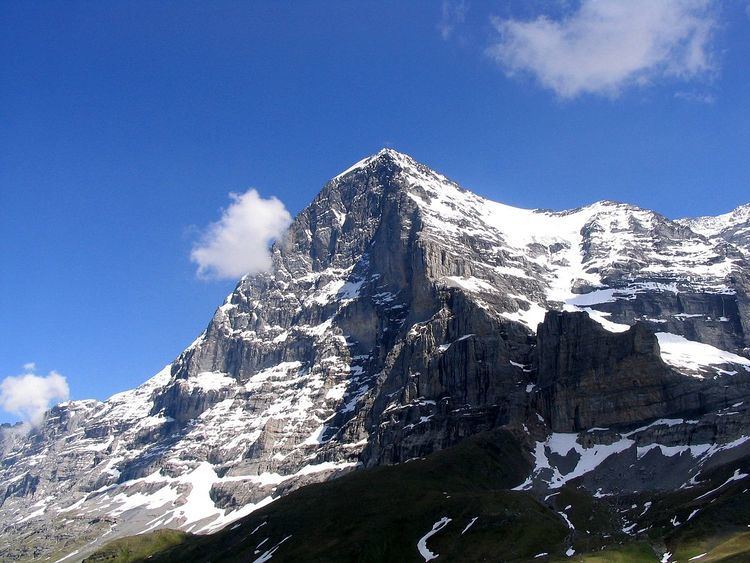Name Edward Strutt Role Mountaineer | Died July 7, 1948 | |
 | ||
Similar People Charles Granville Bruce, George Finch, Howard Somervell, Edward F Norton, George Mallory | ||
Lieutenant-Colonel Edward Lisle Strutt, CBE, DSO (8 February 1874 – 7 July 1948) was a British soldier and mountaineer, and President of the Alpine Club from 1935–38. After a distinguished military career he defended classical mountaineering against what he saw as unhelpful trends in the sport for speed.
Contents
Family
Strutt was the son of Hon. Arthur Strutt and Alice Mary Elizabeth Philips de Lisle. His paternal grandfather was Edward Strutt, 1st Baron Belper. On 10 October 1905 he married Florence Nina, daughter of John Robert Hollond MP DL, of Wonham, Bampton, Devon. They had no children.
Education and military life
Strutt was educated at Beaumont College, Windsor, then at Christ Church, Oxford, and the University of Innsbruck. He joined the 3rd (Militia) Battalion of the Royal Scots (Lothian Regiment) as a lieutenant. The battalion was embodied in late December 1899 and sent to South Africa for service during the Second Boer War. Strutt was promoted to captain on 20 February 1900. He left Cape Town for the United Kingdom with most of the battalion in May 1902, shortly before the end of the war. He later served in the First World War, gaining many decorations and attaining the rank of Lieutenant-Colonel in the Royal Scots.
Strutt commanded a detachment of soldiers from the Honourable Artillery Company that escorted the family of Charles I, the last Austro-Hungarian Emperor-King, to safety in Switzerland in 1919, after having served as the family's protector at Eckartsau on the personal initiative of King George V. Strutt was also involved in a Hungarian Habsburg restoration bid in February 1921 and as a communication link between the Habsburg Imperial and Royal couple aboard the HMS Cardiff, on their way to exile in Madeira, and their children in Switzerland in November 1921.
In 1920 Strutt was appointed Allied High Commissioner of the League of Nations in Danzig.
Alpinism
Strutt had numerous mountaineering expeditions to Tyrol, Ötztal, the Stubai Alps and the Karwendel range. From 1892 the family employed Beatrice Tomasson as a governess. Despite Tommason being fifteen years older than Strutt the family believed they were romantically involved. Tomasson became a member of the Austrian Alpine Club in 1893 and began to attempt major climbs in the Dolomites from 1896 onwards.
Strutt was climbing leader and deputy to expedition leader C. G. Bruce on the 1922 British expedition to Mount Everest that included George Finch and George Mallory. Strutt proved to be an unpopular member of the party, being thought of as 'pompous and pontificating'. The expedition was called off when an avalanche killed seven Sherpa climbers.
Strutt was editor of the Alpine Journal from 1927–37, these being the years – according to Alan Hankinson – in which 'the Alpine Club [...] had declined into a stuffy, snobbish, backward-looking institution.' Hankinson added:
Its dominant figure was Colonel E. L. Strutt [...] for many years the autocratic and outspoken editor of the Alpine Journal. His views were rigid and intolerant. The only decent and honourable way to climb was the way in which he had climbed as a young man. Crampons were inadmissible; pitons anathema.
As editor, Strutt published a number of attacks on what he saw as the insidious modern trends in mountaineering, more often than not on the part of the Germans. Although Strutt had words of praise for those climbers (on expeditions to peaks such as Kangchenjunga and Nanga Parbat) whom he perceived as climbing in the classical tradition – 'We yield to no one in admiration for the German overseas parties led by Rickmers, Bauer, Borchers, Merkl, and others. The modesty of these parties have been excelled only by their skill' – he had a different reaction to climbers using modern tactics in the Alps. He continued in this article from the 1935 Alpine Journal:
But for the present-day German mountaineer in the Alps, wonder replaces admiration. There is no lack of skill – on rocks at any rate – but judgement and even an elementary knowledge of the ethics of mountaineering are often conspicuously absent. In these pages it has been too frequently our task to relate some unjustifiable exploit and, in the same number, to record the inevitable disaster accruing to the perpetrator. While regretting the folly of it all, we mourn the loss of promising lives.
The trend towards climbing (and descending) the great peaks at great speed also disgusted Strutt. On hearing of an American who had hired a guide to take him up and down the Matterhorn in five hours, Strutt commented that this was the kind of crime 'for which the death penalty is inadequate'.
The ongoing attempts on the north face of the Eiger (the Eigerwand) – which had thus far resisted all efforts, and had taken the lives of six German and Austrian climbers – were a particular object of his disdain, provoking his most notorious outburst (in his 1938 Presidential Valedictory Address to the Alpine Club, just before the first successful ascent by Anderl Heckmair and party):
The Eigerwand – still unclimbed – continues to be an obsession for the mentally deranged of almost every nation. He who first succeeds may rest assured that he has accomplished the most imbecile variant since mountaineering first began.
